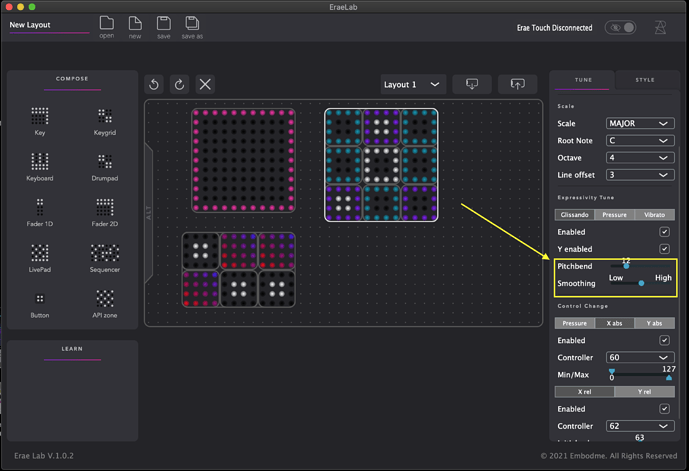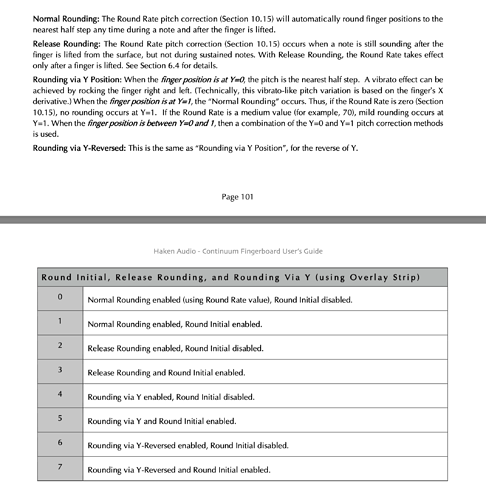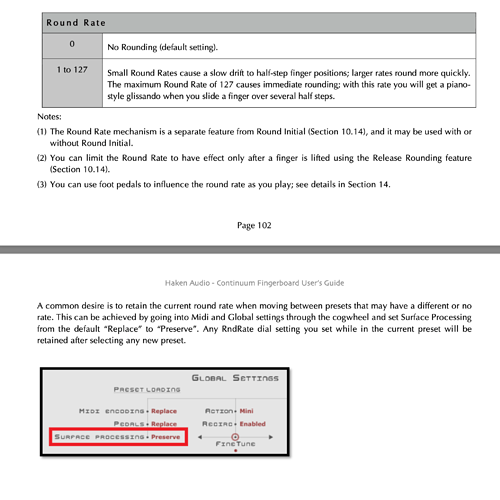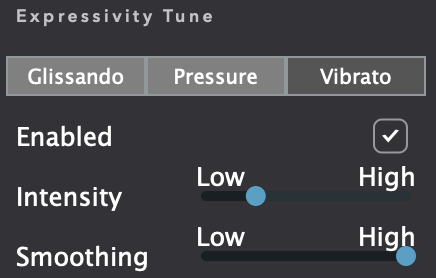Am I correct in saying the slides are being quantised into new notes?
e.g. if you slide from C into C#, but not all the way, at some point it will snap to C#
this is what it feels like its doing…
the Soundplane also does this if you have Quantise ON, and in fairness this is usually how I use it.
it allows for sliding into new notes, and it sounding great 
but it would be nice to have two quantisation settings (I think continuum has these?)
Quantise Initial touch - on/off
(current behaviour is ON)
do you quantise on you initial press - which can be difficult to judge until you hear first sound,
Quantise Slide - on/off
(current behaviour is ON)
when you slide, does it snap to the note.
OFF would no quantisation when you enter a new pad.
you could use combinations
ON/ON = current behaviour
ON/OFF = quite useful for an unquantised feel BUT you have confidence on initial touch.
OFF/ON = probably not that useful 
OFF/OFF = for fully unquantised feeling!
it would also be useful to be able to set the pitch-bend range…
whilst 48 is the standard default for MPE, given the size of the pad, 12 and 24 would be useful - since these would allow for higher resolution slides
(though, in fairness, Ive not calculated to see if the sensors could make use of this  )
)


 )
)



 )
)
